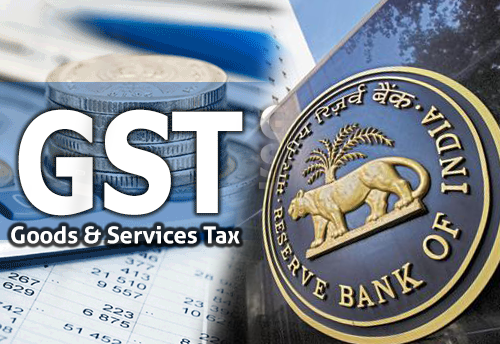GST to boost SMEs by improving EODB and extending outreach beyond state borders: RBI
Updated: May 17, 2017 07:44:19am

GST to boost SMEs by improving EODB and extending outreach beyond state borders: RBI
Mumbai, May 17 (KNN) GST implementation is likely to boost the small and medium scale enterprises (SME) sector and make exports more competitive by eliminating the cascading impact of taxes, highlights a study conducted by RBI.
RBI conducted a study on State Finances: A Study of Budget. The study highlighted that GST implementation will have far reaching implications for the Indian Economy RBI releases State Finances.
The study said that GST will boost SMEs by improving their ease of doing business; lowering logistical costs; extending outreach beyond state borders; and aiding SMEs dealing in sales and services.
Furthermore, economic activity would also benefit from exports becoming more competitive as the GST regime will eliminate the cascading impact of taxes.
The study said that under the prevailing tax structure in India, investment is discouraged through the application of excise duties and VAT on capital goods, for which no set off or input tax credit is provided.
For example, input tax credits are not allowed for union excise duties on capital equipment acquired for non-manufacturing sectors; similarly, no credit is allowed for the state VAT on capital goods acquired by the services sector.
The implementation of GST would be the single most important tax reform undertaken since the onset of economic reforms with far reaching fiscal consequences for the federal structure of the Indian government, said the study.
In this regard, the key issue is the determination of the revenue neutral rate which would ensure that the Centre and states would not incur any loss of revenue post-GST implementation.
While states are expected to forego fiscal autonomy in the levying of new taxes, changing the existing tax rate or giving tax exemptions with the implementation of the GST, it is expected to promote cooperative federalism and reduce competitive federalism, the study noted.
Nevertheless, the amount of tax revenue raised by the Central Government in the recent period through special levies, the benefits of which are not shared with state governments, brings to the fore the issue of vertical fiscal imbalance.
In the way ahead, thorny issues on implementation are sought to be addressed through a robust dispute resolution mechanism while GSTN would provide the necessary IT infrastructure to all stakeholders, said the study.
Finally, the administrative arrangements of GST rollout have to be seamlessly coordinated among all stakeholders. From a medium-term perspective, greater devolution of resources to states would provide the flexibility to priorities their expenditure in sync with their development objectives.
In this regard, the shift towards statutory transfers have led to an increase in untied funds at the disposal of states. Prudent choices of policies in public finances will help the states in realising their developmental objectives and would also keep them solvent over the medium term, the study added.
The government aims to roll out the new indirect tax regime from July and the GST Council is soon expected to come out with rates and final rules. The four key legislation, the Central GST, Integrated GST, Union Territory GST and the compensation bills, were passed












